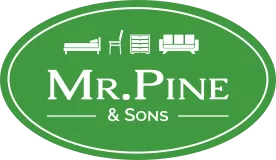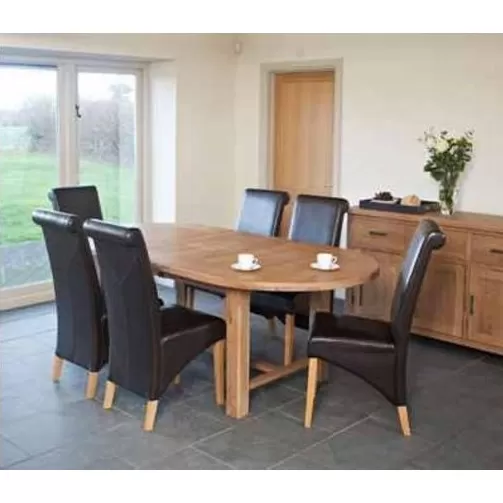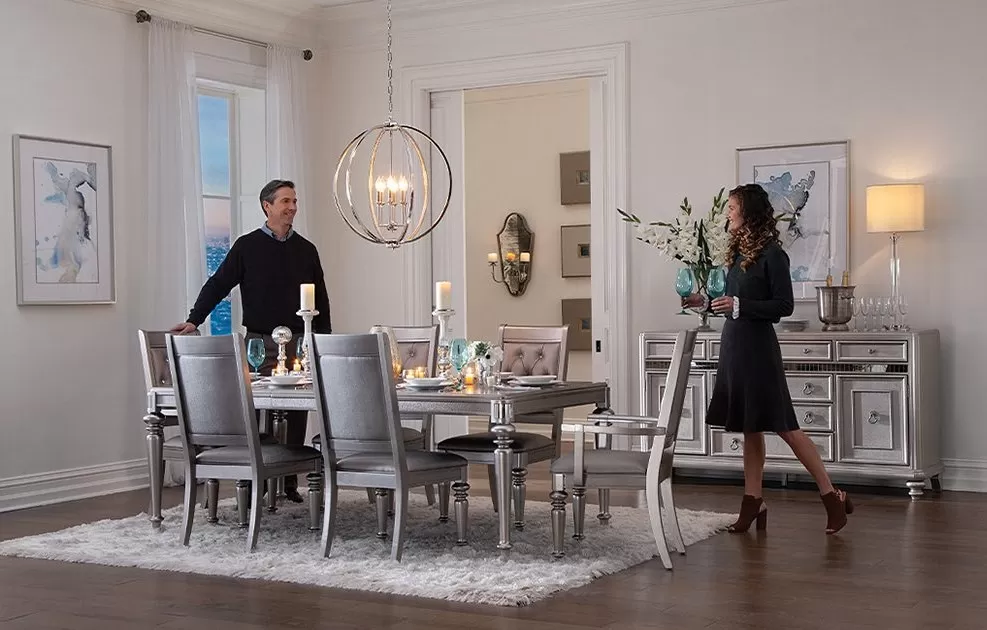Numerous dining tables come with extensions to alter their size. This adaptability in size is beneficial if you have limited space but sometimes require more seating room. During holidays and special events, a larger table that accommodates many people is a necessity, while for everyday living, a smaller table can create an illusion of more space and provide greater mobility around the house. Although most tables offer extensions, the types of extensions can vary. Continue reading to discover the most prevalent kinds of extendable dining tables.
Classic Central Leaves for Expandable Dining Tables
The most widespread type of extension is a leaf that fits into the centre of the table. Typically measuring 12 to 18” in width, each leaf adds space for an additional row of seating at the table. These leaves consist of one solid piece and often have an apron attached at the bottom to give the table a polished appearance when the leaf is in place. These leaves are usually stored separately from the table, and it is advisable to keep them flat to prevent warping. Common places to store these leaves include under a bed or on a shelf.
Butterfly or Self-Storing Leaf
A highly popular table extension is the butterfly leaf. These leaves are hinged in the middle and fold up like a book for convenient storage under the tabletop. These tables have extra space below the top to accommodate the leaf. Unlike one solid piece, these leaves are split in the middle, adding an additional seam to the tabletop when the leaf is inserted. The ease of storage is favoured among homes with limited extra space, and since the leaf is built into the table, there is no risk of losing it during a move or damaging it from improper storage.
Breadboard Leaves for Expandable Dining Tables
Breadboard leaves are extensions that attach to the ends of the table, rather than the centre like a traditional leaf. Usually, this type of table comes with two extensions. The most common method of attachment is using rods or slides that extend from the ends of the table to support the leaves. A latch lock or clip keeps the leaves securely attached. One advantage of this type of table is that when the leaves are not in use, the table retains a solid, one-piece appearance without any seams on the tabletop.
Leaves offer a fantastic way to add versatility to your dining set. There are other ingenious ways to expand tables; certain custom-order brands offer leaves that completely hide under the table and use a butterfly leaf mechanism combined with wheeled legs on one side of the table for expansion. Whichever type of leaf your table incorporates, the ability to adjust its size is a feature that many consumers appreciate.




